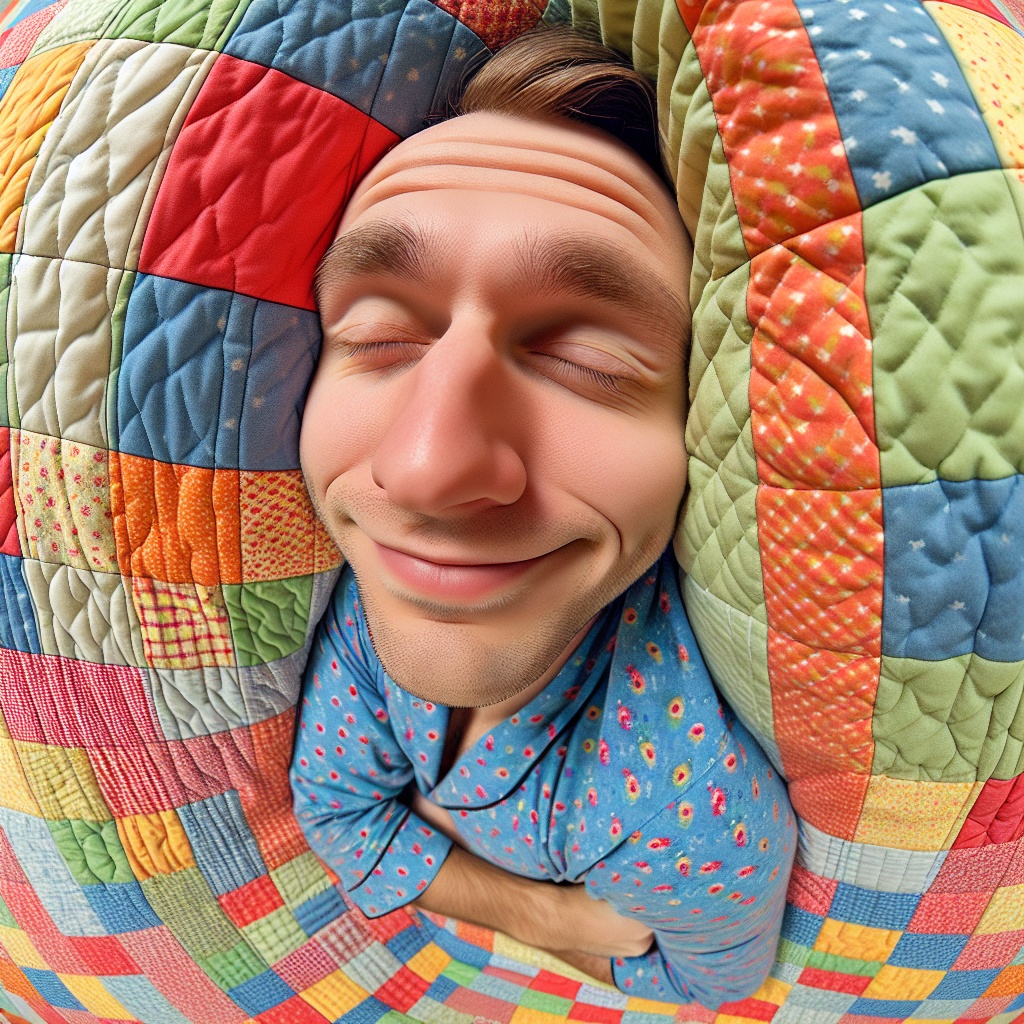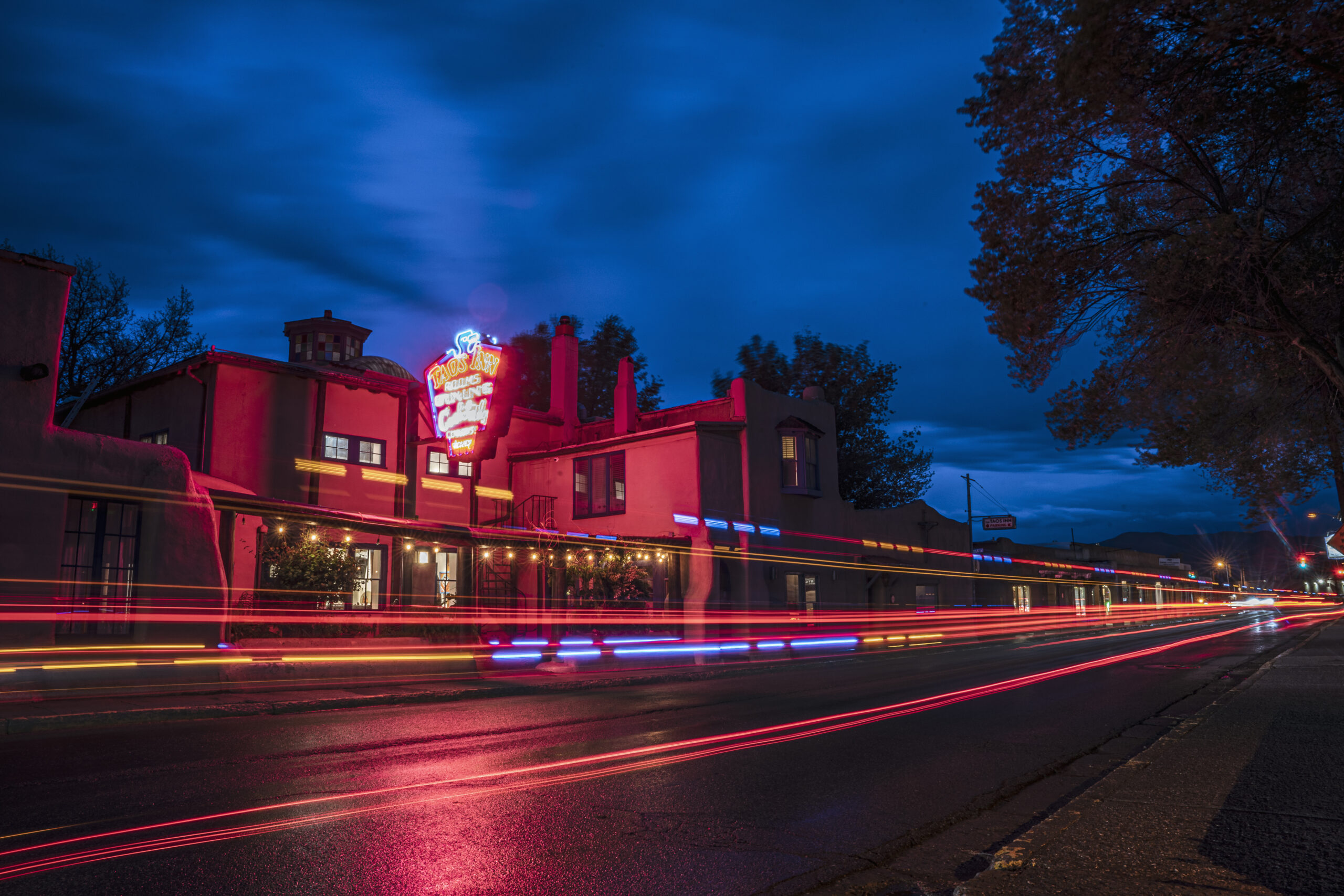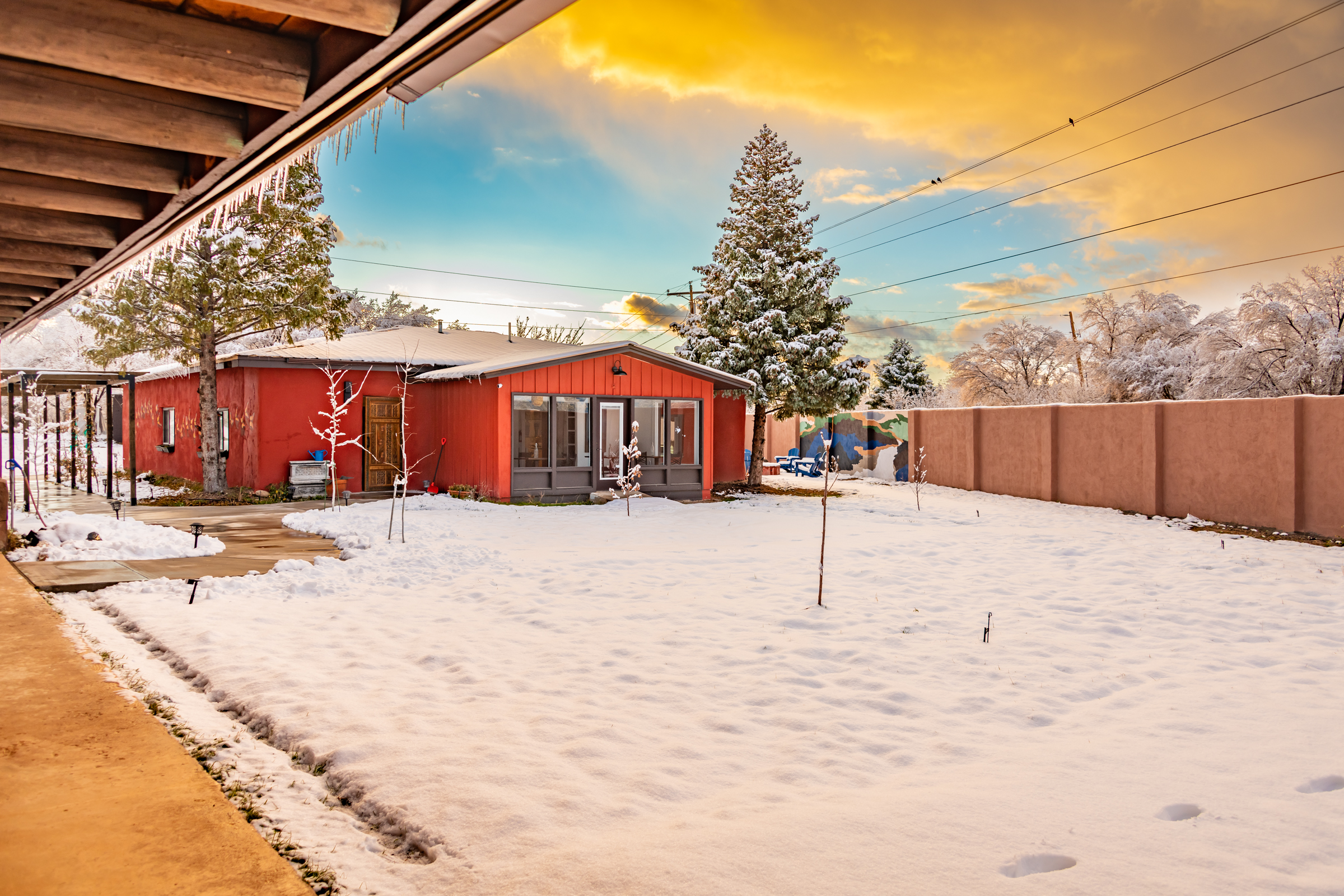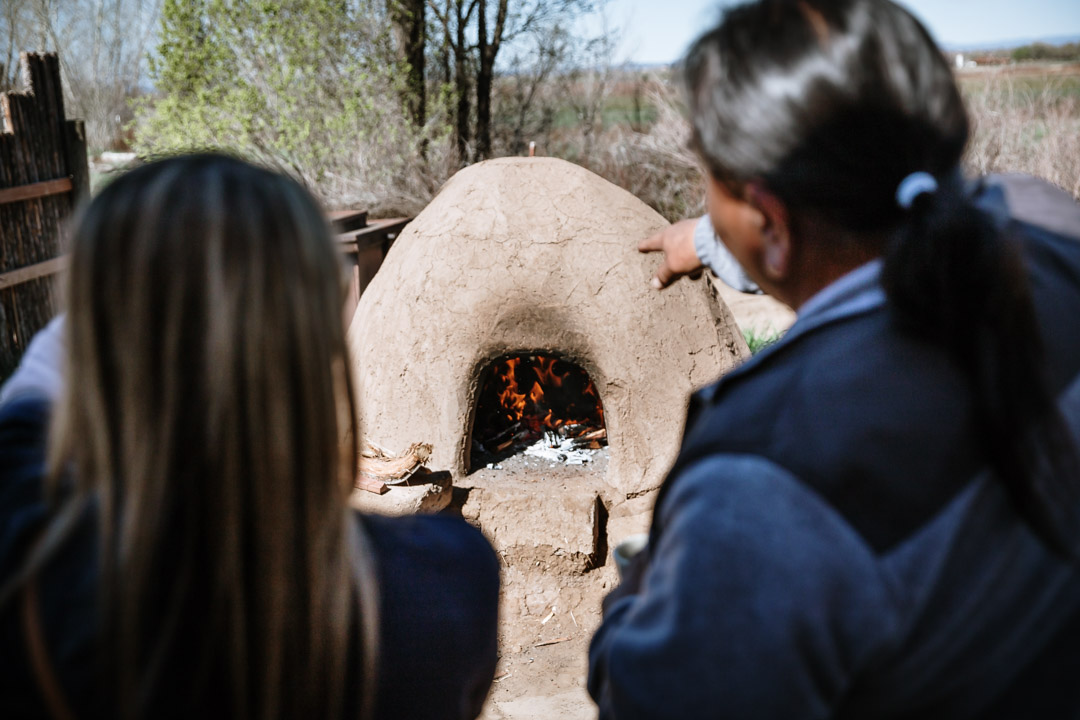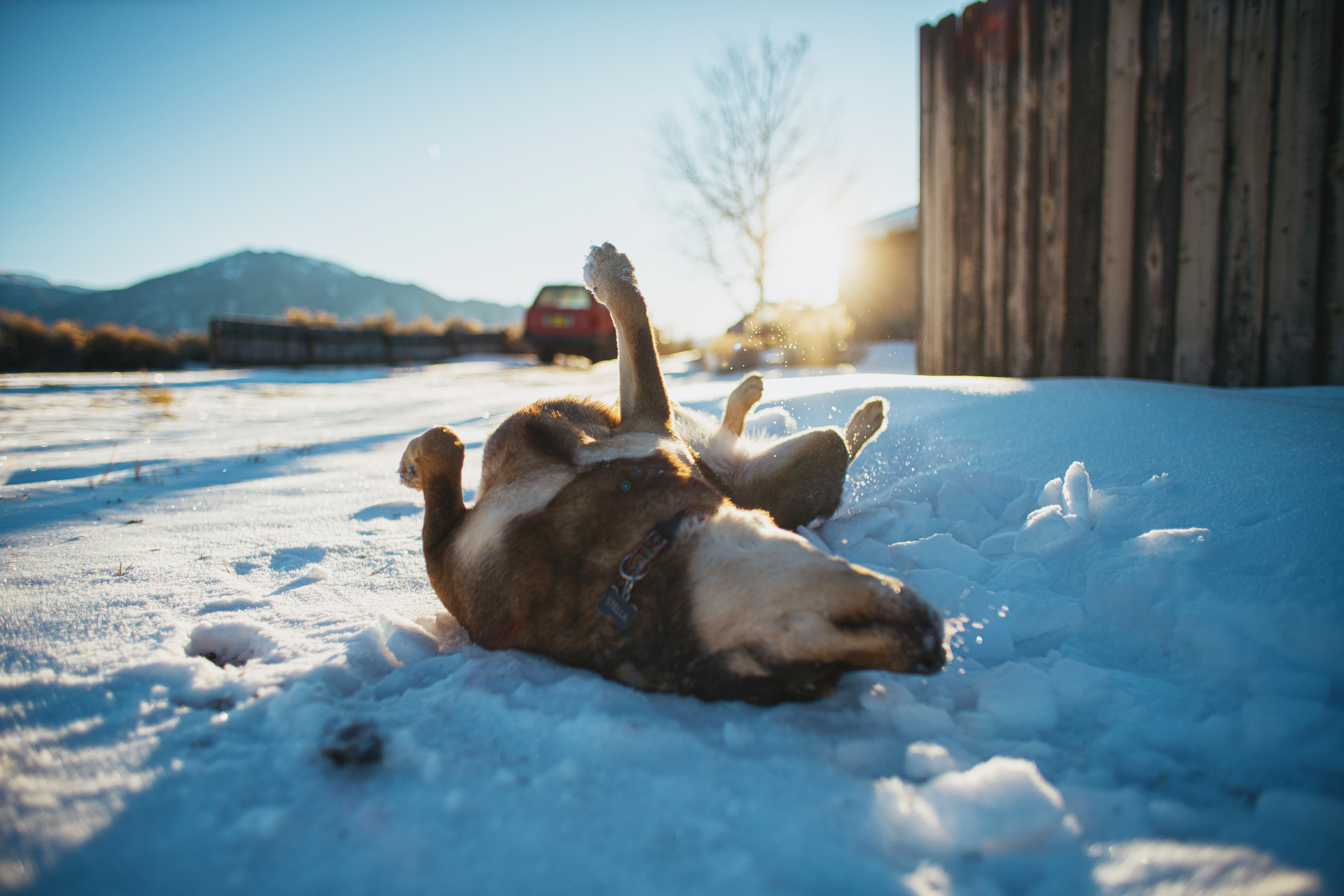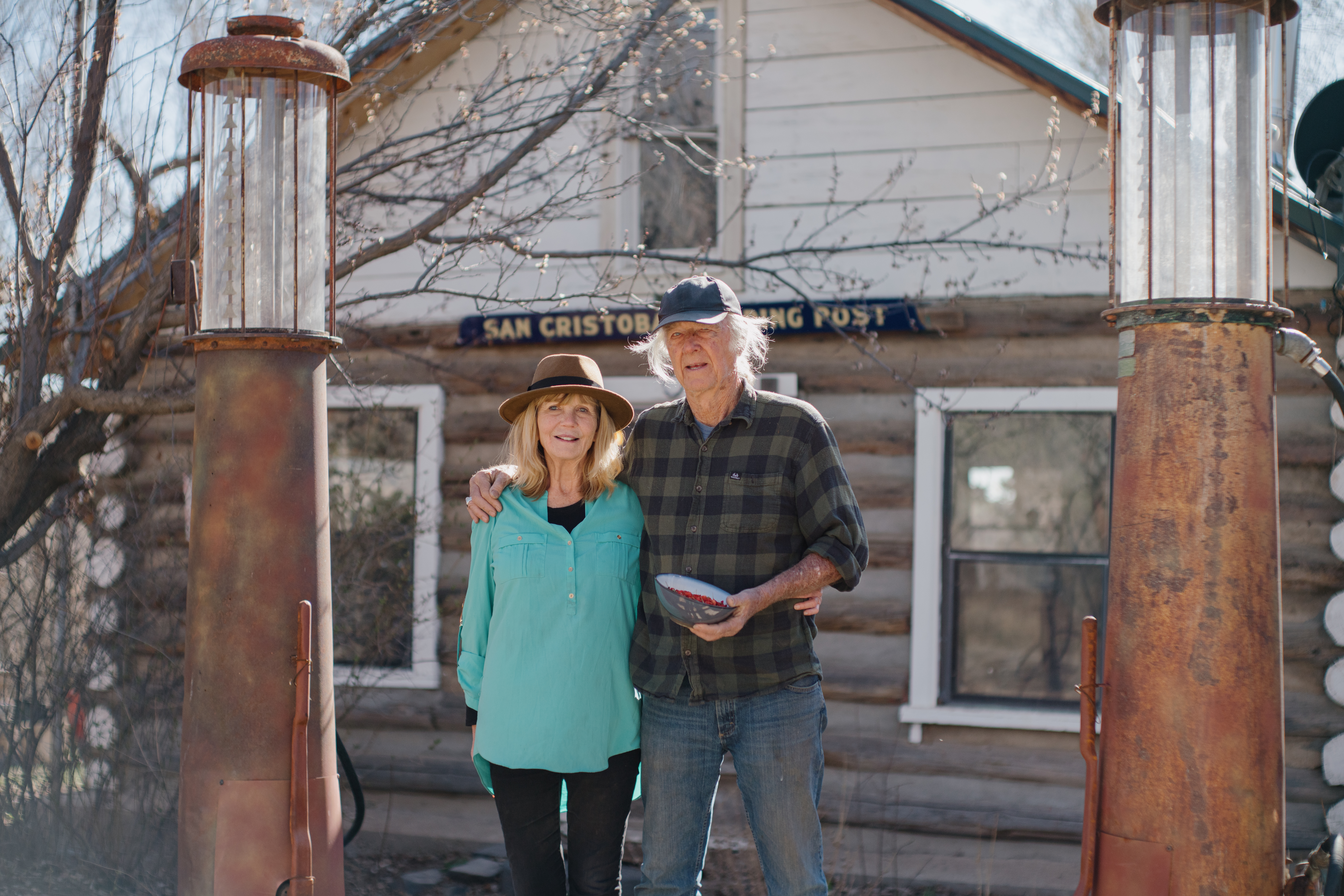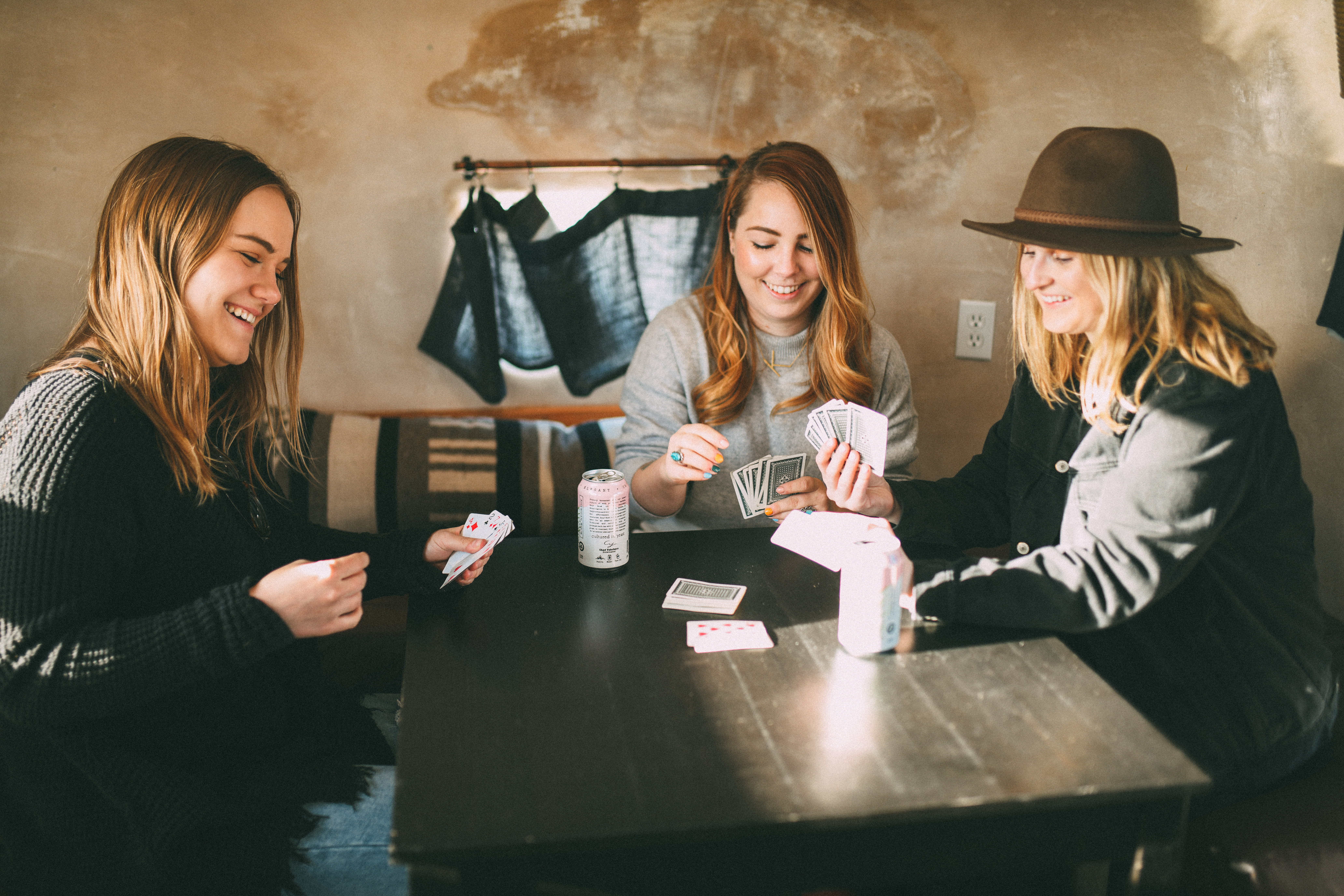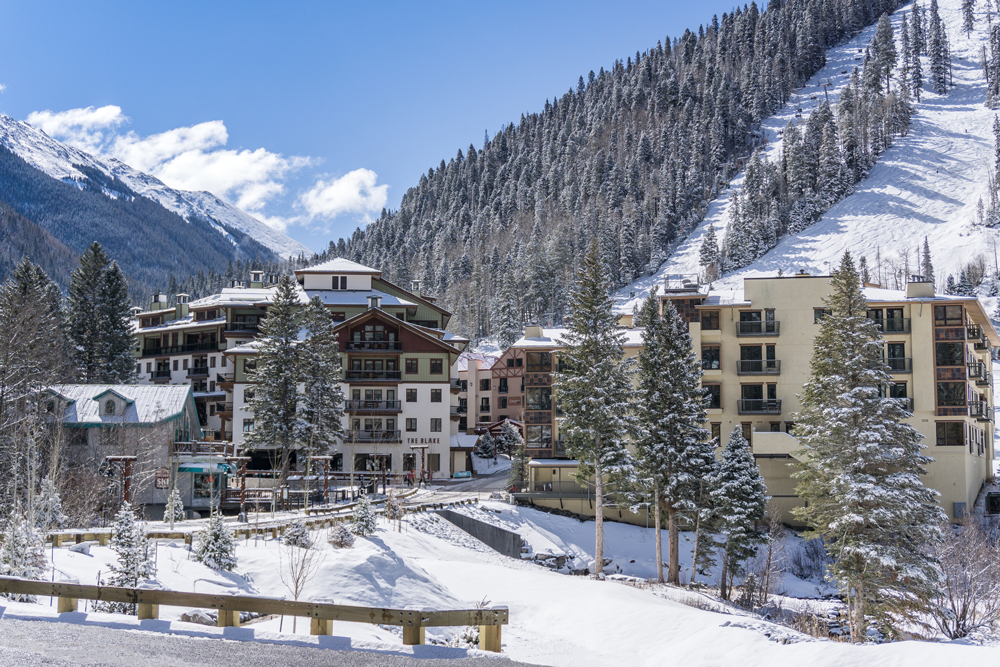Where Taos history, art, and hospitality meet
By Ellen Miller-Goins
Kit Carson Road is more than a route through Taos’ historic district — it’s a stroll through centuries of stories, art and architecture. Along this storied street you’ll find some of the town’s most distinctive places to stay: historic inns that blend adobe charm with family legacies, artistic heritage and cultural treasures you won’t find anywhere else. Here are four historic lodgings where your overnight stay comes with a side of Taos history.
Casa Benavides Inn
Heritage, art, and the best breakfast in town
Casa Benavides is a family-run landmark with roots in two of Taos’ best-known families: the McCarthys and the Benavides. Established in the late 1980s by (the late) Barbara Benavides McCarthy and her husband Tom, the inn grew from just seven rooms into a sprawling 36-room retreat. The compound includes former residences (both Barbara and Tom’s childhood residences), a one-time welfare office, and the old Lewis Art Gallery, all tied together with Barbara’s design touch — think Southwestern textiles, salvaged barn doors from Tom’s 1904 grandfather’s building and walls adorned with regional art. And at nearby McCarthy Plaza, Tom and Barbara’s daughter Ruthann McCarthy runs Legacy Cafe, extending the family’s hospitality tradition onto Taos’ dining scene. With Kit Carson Park a short walk away, concert-goers can stroll rather than drive.
The Extra: Breakfast is the star. Barbara’s famous “Drop Dead Granola,” frittatas with red chile, homemade muffins, French toast with fresh fruit are so beloved that repeat guests plan trips around them.

Casa Benavides Inn
137 Kit Carson Road, Taos
Rates: Typically under $200 per night
575-758-1772
casabenavides.com
La Doña Luz Inn (and El Rincón Trading Post)
An inn masquerading as an art museum — with Taos’ oldest trading post next door
Just off Kit Carson Road, La Doña Luz is filled to the brim with original art, Native and Spanish Colonial antiques, and whimsical design. The inn’s name honors Doña Luz Lucero de Martínez, a well-educated Taoseña whose family once hosted dignitaries here in the early 1800s. Today, Paco Castillo — grandson of famed trader and artist Ralph Meyers — runs the inn as both a place of lodging and a living museum. Each suite has its own theme: the Red Willow Suite honors Taos Pueblo; La Madonna celebrates maternal love with art depicting the Virgin and Child; and the Rainbow Room, with its rooftop hot tub and hand-painted ceiling, pays homage to Mabel Dodge Luhan through a design inspired by Paco’s grandfather. Right next door is El Rincón, the trading post Meyers opened more than a century ago. Together, the inn and trading post embody more than 100 years of Taos family history, hospitality, and artistic exchange.
The Extra: Guests of La Doña Luz’s Rainbow Room can soak in a rooftop hot tub while gazing at Taos Mountain. Then, with El Rincón steps away, they can explore the town’s oldest trading post — part boutique, part museum — and leave with a piece of Taos’ living history.

La Doña Luz Inn
114C Kit Carson Road, Taos, NM
Rates: $129–$289 per night (varies by suite)
Highlights: Rooftop hot tub (Rainbow Room), Native and Spanish Colonial artifacts, Taos’ oldest trading post on-site
575-758-9000
stayintaos.com
Hacienda del Sol
Adobe elegance with a world-class art connection
Dating back to 1804, Hacienda del Sol has sheltered everyone from traders to modern travelers. Built as a traditional adobe compound, it eventually became the home of Mabel Dodge Luhan and Tony Lujan, whose circle of artists and writers defined early 20th-century Taos. D.H. Lawrence stayed here while drafting works, Willa Cather gathered notes for Death Comes for the Archbishop, and Georgia O’Keeffe came often from nearby Abiquiú and painted her sunflowers there. Later, historian Frank Waters used the inn as his base while completing “The Man Who Killed the Deer. ” In this way, the Hacienda became not just a home but a crucible of Southwestern art and literature. The inn’s architecture is quintessentially Taos with its thick adobe walls, vigas and kiva fireplaces. Today, its rooms and suites blend historic atmosphere with modern comforts, from clawfoot tubs and steam showers to private patios with mountain views. Owners Mike and Blair Morton are lifelong creatives who bring a passion for art, history, nature and literature to this historic property. They continue to uncover the place’s compelling stories and characters, many of which had been forgotten, and are proud to share this historic slice of Taos with their guests and the community.
The Extra: The Hacienda holds treasures as distinctive as its history. Guests can view a rare portfolio of Edward Curtis’s “The North American Indian,” a monumental 20-volume photographic study of Indigenous life. Contemporary legacies linger too: Navajo artist R.C. Gorman left his mark here with custom tile work throughout the suites. And for travelers seeking inspiration, the Hacienda continues to host writers’ residencies, retreats, and intimate cultural gatherings — ensuring its tradition as a hub of creativity remains unbroken.
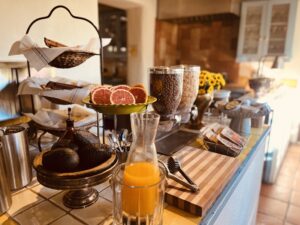
Hacienda del Sol
109 Mabel Dodge Lane, Taos, NM
Rates: $150–$325 per night (varies by room/suite)
575-758-0287
haciendadelsoltaos.com
Mabel Dodge Luhan House
Where artists, writers, and dreamers found inspiration
Few places in Taos hold as much cultural weight as the Mabel Dodge Luhan House, also known as the “Big House.” Purchased in 1918 by arts patron Mabel Dodge and expanded with the help of her Pueblo husband Tony Lujan, the adobe compound became a magnet for creative minds. Georgia O’Keeffe, D.H. Lawrence, Ansel Adams, and Carl Jung all gathered here, leaving their imprint on Taos’ artistic identity. Today, the National Historic Landmark operates as a 501(c)3 nonprofit organization with 21 rooms spread across the main house and cottages. Thick adobe walls set the mood, while individually decorated rooms feature original art, handcrafted details, and — in many cases —terraces with mountain views. Breakfast is included, and the property offers meeting spaces and grounds designed for workshops and small conferences.
The Extra: True to its legacy, the inn continues to host workshops in writing, art, and wellness. Guests staying during these periods may join communal meals and conversations — a chance to experience the house as the creative salon Mabel intended.

Mabel Dodge Luhan House
240 Morada Lane, Taos, NM
Rates: $125–$250 per night (when not reserved for workshops)
575-751-9686
mabeldodgeluhan.com














